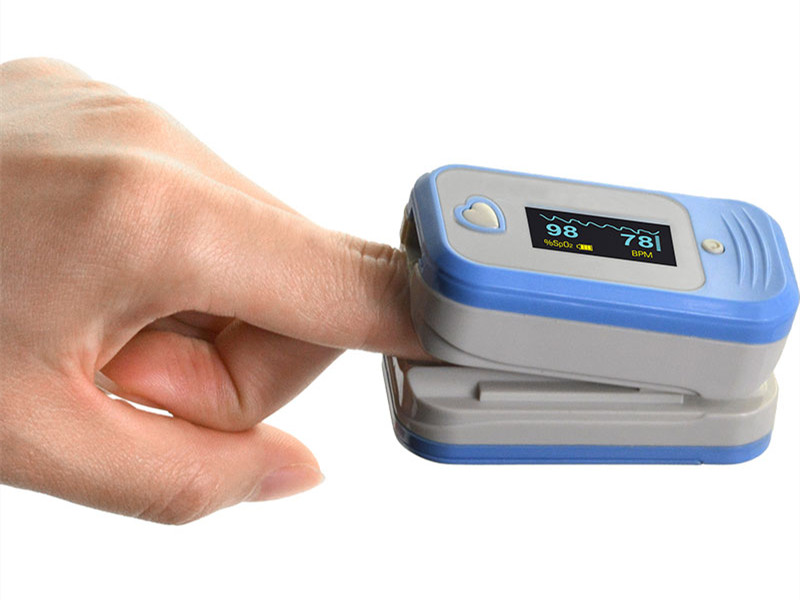SpO₂ is one of the important indicators of physical health. The SpO₂ of a normal healthy person should be kept between 95%-100%. If it is lower than 90%, it has entered the range of hypoxia, and once it is lower than 80% % Is severe hypoxia, which can cause great damage to the body and endanger life.
SpO₂ is an important physiological parameter that reflects respiratory and circulatory functions. According to incomplete statistics, most of the reasons for the emergency consultation of the respiratory department in the relevant departments of the hospital are related to SpO₂. We all know that low SpO₂ is inseparable from the respiratory department, but not all decreases in SpO₂ are caused by respiratory diseases.
What are the reasons for low SpO₂?
1. Whether the partial pressure of inhaled oxygen is too low. When the oxygen content of the inhaled gas is insufficient, it can cause a decrease in SpO₂. According to the medical history, the patient should be asked whether he has ever been to high altitudes above 3000m, flying at high altitude, rising after diving, and poorly ventilated mines.
2. Whether there is airflow obstruction. It is necessary to consider whether there is obstructive hypoventilation caused by diseases such as asthma and COPD, fall of the base of the tongue, and obstruction of foreign body secretions in the respiratory tract.
3. Whether there is ventilation dysfunction. Think about whether the patient has severe pneumonia, severe tuberculosis, diffuse pulmonary fibrosis, pulmonary edema, pulmonary embolism and other diseases that affect the ventilation function.
4. What is the quality and quantity of Hb that transports oxygen in the blood? The appearance of abnormal substances, such as CO poisoning, nitrite poisoning, and a large increase in abnormal hemoglobin, not only seriously affects the transport of oxygen in the blood, but also seriously affects the release of oxygen.
5. Whether the patient has proper colloid osmotic pressure and blood volume. Proper colloidal osmotic pressure and sufficient blood volume are one of the key factors for maintaining normal oxygen saturation.
6. What is the patient’s cardiac output? To maintain the normal oxygen delivery of the organ, there should be sufficient cardiac output to support it.
7. Microcirculation of tissues and organs. The ability to maintain proper oxygen is also related to the body’s metabolism. When the body’s metabolism is too large, the oxygen content of venous blood will be significantly reduced. After venous blood passes through the shunted pulmonary circulation, it will cause more severe hypoxia.
8. The utilization of oxygen in surrounding tissues. Tissue cells can only use oxygen in the free state, and the oxygen combined with Hb can only be used by the tissue when it is released. Changes in pH, 2,3-DPG, etc. affect the dissociation of oxygen from Hb.
9. The strength of the pulse. SpO₂ is measured based on the change in absorbance produced by arterial pulsation, so the replacement device must be placed in a place with pulsating blood. Any factors that weaken the pulsatile blood flow, such as cold stimulation, sympathetic nerve excitement, diabetes and arteriosclerosis patients, will reduce the measurement performance of the instrument. SpO₂ cannot be detected in patients with cardiopulmonary bypass and cardiac arrest.
10. The last one, after excluding all the above factors, don’t forget that the SpO₂ may be decreased due to the malfunction of the instrument.
The oximeter is a common tool for monitoring SpO₂. It can quickly reflect the SpO₂ of the patient’s body, understand the body’s SpO₂ function, detect hypoxemia as soon as possible, and improve patient safety. MedLinket home portable Temp-pluse oximeter can efficiently and quickly measure SpO₂ lily level. After years of continuous research, its measurement accuracy has been controlled at 2%, which can achieve accurate measurement of SpO₂, temperature, and pulse, which can meet professional requirements. Need for measurement.
Advantages of MedLinket’s finger clip Temp-pluse oximeter:
1. An external temperature sensor can be used to continuously measure and record body temperature
2. It can be connected to an external SpO₂ sensor to adapt to different patients and achieve continuous measurement.
3. Record pulse rate and SpO₂
4. You can set SpO₂, pulse rate, upper and lower limits of body temperature, and prompt over limit
5. The display can be switched, the waveform interface and the large-character interface patent algorithm can be selected, and it can be accurately measured under weak perfusion and jitter. It has a serial port function, which is convenient for system integration.
6. OLED display, no matter day or night, it can display clearly
7. Low power and long battery life, low cost of use
发布时间: 21-10-21





